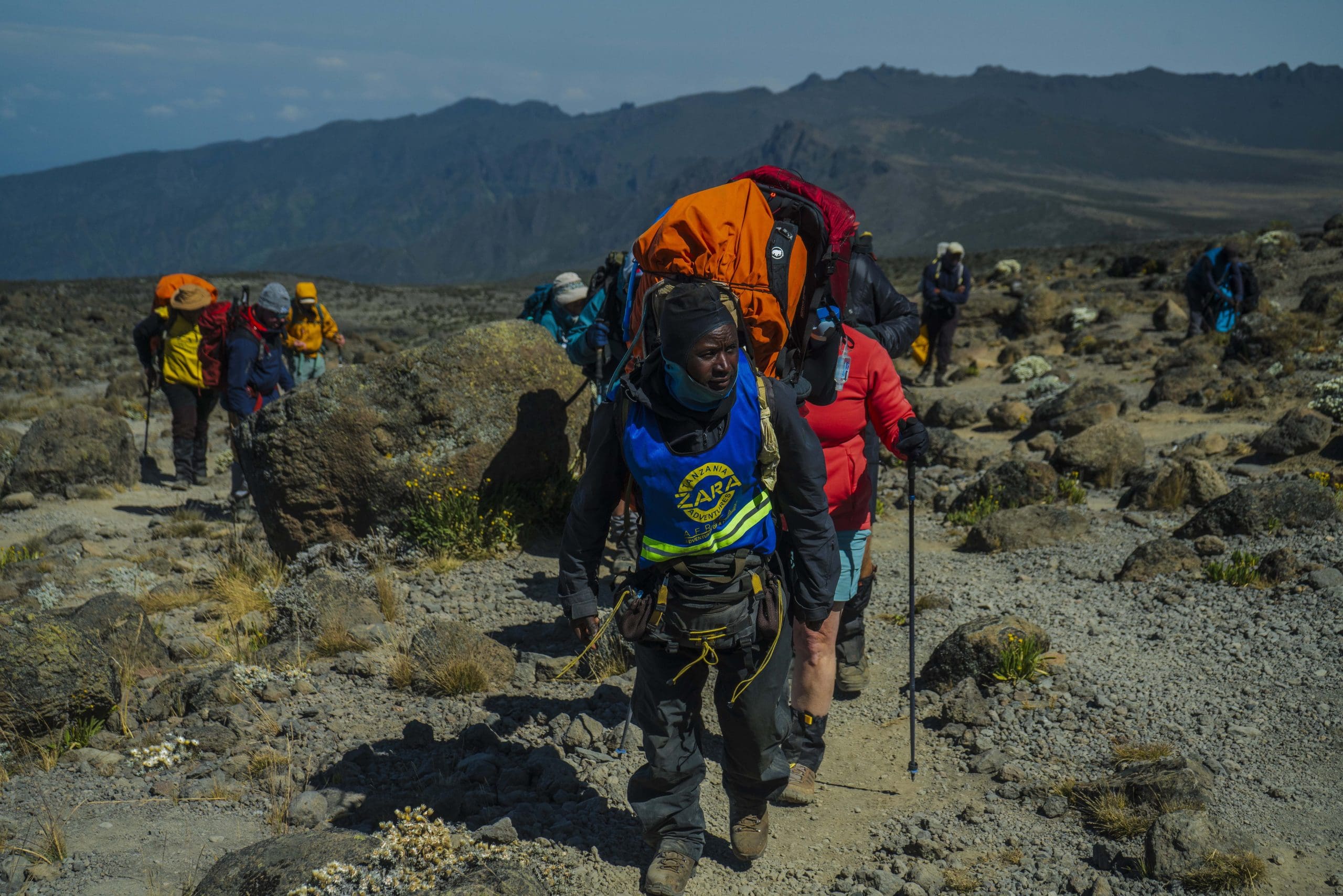The continent may be known for its deserts and savannas, but the question surprises many: Does it snow in Africa? The answer is yes, and not just in one place. There is enough freezing weather in Africa to attract winter sports enthusiasts.
Snow is rare, but it falls in some regions. From high-altitude peaks to southern winters, the white veil of icy conditions touches more places than you’d expect.
Where Does It Snow in Africa?
It usually falls at high elevations or in colder regions during the winter months. Northern Africa, parts of the southern region, and several equatorial mountains, such as Kilimanjaro, receive wintry weather. It appears in highland areas and some national parks. These spots attract visitors seeking winter sports in surprising parts of the continent.
Major snowy regions in Africa are:
1. Mount Kilimanjaro (Tanzania)

Africa’s tallest mountain, Mount Kilimanjaro, rises 5,895 meters and is famously capped with snow and glaciers year-round. This might seem surprising given its location near the equator, but the peak’s high elevation creates an alpine climate. Climbing Kilimanjaro often means trekking through snowfields, especially as you approach the summit. Kilimanjaro remains a significant draw for tourists and adventurers alike.
2. Mount Kenya (Kenya)

Mount Kenya, the second-highest peak in Africa at 5,199 meters, also sees seasonal snow and glacier coverage. Its rugged mountains, Batian, Nelion, and Lenana, are often dusted with snow, particularly during the coldest months (June to August and December to February). Though smaller than Kilimanjaro, Mount Kenya features permanent ice fields and supports alpine vegetation. The mountain is also part of Mount Kenya National Park, a UNESCO World Heritage Site, drawing both hikers and researchers interested in the effects of climate change on tropical glaciers.
3. The Atlas Mountains (Morocco, Algeria, Tunisia

The Atlas Mountains are one of North Africa’s most snow-prone regions. With peaks reaching over 4,000 meters, snowfall typically occurs from December to February, blanketing summits and forested slopes. Oukaimeden, a ski resort in Morocco, is especially active during these months, welcoming tourists from across the region. The snow here supports a variety of winter sports, including skiing and snowboarding. Glaciers once existed here but are gradually retreating due to climate shifts. Despite this, annual snow events remain a winter highlight in Morocco’s highlands.
4. Drakensberg Mountains (South Africa and Lesotho)

This mountain range stretches across eastern South Africa and into the country of Lesotho. Snow commonly falls during the Southern Hemisphere’s winter (June–August), particularly at higher elevations above 3,000 meters. Lesotho offers ski facilities, while parts of KwaZulu-Natal and the Free State also experience seasonal flurries. In recent years, rare snowstorms have reached lowland towns. These occurrences have become more frequent, and some link the trend to climate change. The region supports not only hiking but also winter sports activities, especially in the Maluti Mountains.
5. Simien Mountains (Ethiopia)

The Simien range, home to Ras Dashen, Ethiopia’s tallest peak, receives light snow during the coldest months. Although snowfall here is not as heavy as in other African ranges, it still draws attention due to its high-altitude location and rich biodiversity. The icy patches and occasional frost add a unique touch to the dramatic landscapes. Wildlife such as the Walia ibex and the Ethiopian wolf are adapted to this cold climate. Most snowfall occurs between December and February, primarily at elevations above 4,200 meters.
6. Rwenzori Mountains (Uganda and the Democratic Republic of Congo)

Also known as the Mountains of the Moon, the Rwenzori range boasts Africa’s most permanent snowfields. Rising above 5,000 meters, the range supports year-round glaciers and snow, maintained by frequent precipitation and high altitude. The snowfields, however, have reduced in recent decades. Climbers often need gear suited for icy terrain, making this one of the continent’s most challenging alpine treks. The best time to visit is from December to March, when the skies are clearer and paths less muddy.
Though rare, these regions prove that frozen conditions aren’t just a myth; it’s a seasonal reality shaped by altitude, geography, and weather systems.
Does It Snow in South Africa?

Yes, it does snow in South Africa during the winter months from June to August. It falls yearly in the Drakensberg Mountains, where elevations rise above 3,000 meters. Some areas in Lesotho even offer skiing when winter conditions are right.
South region snowstorms can occasionally blanket regions such as the Eastern Cape, KwaZulu-Natal, and the Free State. Notably, in July 2021, widespread snow blanketed the highlands and even parts of the Northern Cape and Gauteng. In August 2022, another cold snap brought significant snowfall to the southern Drakensberg, with icy conditions reported in parts of the Western and Eastern Cape.
While such events are not daily occurrences, they have become more frequent in recent decades, a trend some attribute to changing weather patterns and climate variability.
Does It Snow in Egypt?

Does it snow in Egypt? It’s rare but not impossible. In places like Saint Catherine, it sometimes falls and often makes news because it’s so rare in this region.
In 2013, a snowstorm hit Cairo for the first time in over a century, which is more common in Egypt’s Sinai Peninsula, especially near the high town of Saint Catherine. Located near the Saint Catherine Mountains, this area can experience cold winters and occasional icy conditions.
Why Snow in Africa Is a Rare Occurrence
Most of the continent lies in tropical or subtropical zones, where weather patterns rarely support wintry weather. The dry season dominates much of the year, and temperatures at lower elevations remain well above freezing.
It generally occurs in:
- High-altitude zones (e.g., Kilimanjaro, Rwenzori, Atlas Mountains)
- Seasonal mountain ranges (e.g., Drakensberg, Simien Mountains)
- Unusual storms that bring cold air further than usual (e.g., the 2013 Egyptian snow)
Climate Change in Africa
Africa’s climate zones are seeing changes, from deserts to lush savannahs. The savannah regions, which cover a large portion of Sub-Saharan Africa, are facing unpredictable rainfall and prolonged dry spells.
While snow in Africa may sound rare or surprising, these extreme events of unexpected snowfall or intense snowstorms are a broader picture of climatic shifts. In the South African savannas, for example, erratic cold fronts have brought snow to areas that historically experienced only mild winters.
Reports reveal that climate change affects not just temperatures but also wind patterns and precipitation, which means areas previously unaffected may now experience brief dustings or even blizzards. This is evident in Lesotho, where snowfall has become more regular than before, and in Morocco’s Atlas Mountains, where glaciers are retreating but cold snaps still bring wintery scenes. These changes not only affect landscapes but also impact agriculture, tourism, and wildlife within ecosystems.
Climbing and Experiencing Snow in Africa
If you’re interested in experiencing snowfall in this region, your best bet is to head to the mountains. Whether it’s a winter hike in southern Africa or a trek in northern Morocco, Africa has hidden gems for those who enjoy winter sports. If you want to ski, snowboard, or simply play, destinations like Lesotho and Oukaimeden are great starting points.
For adventurers, climbing snowy peaks like Mount Kilimanjaro offers an unforgettable experience. Want to know more? Explore the location of Mount Kilimanjaro to understand its significance.
Frequently Asked Questions
1. Where can I see snow in Africa?
You can see it in Africa on Mount Kilimanjaro, Mount Kenya, the Drakensberg Mountains, the Rwenzori Mountains, and the Atlas Mountains, as well as in high areas of Egypt and South Africa.
2. What months does it snow in Africa?
It typically occurs between June and August in the southern regions and between December and February in the northern areas.
3. Can you ski in Africa?
Yes, you can ski in Lesotho, South Africa, and Morocco during their seasons. Some ski resorts operate depending on weather conditions.
4. Does it snow every year on Mount Kilimanjaro?
Yes. Due to its high altitude, Mount Kilimanjaro receives snowfall every year, although the glaciers are shrink



































